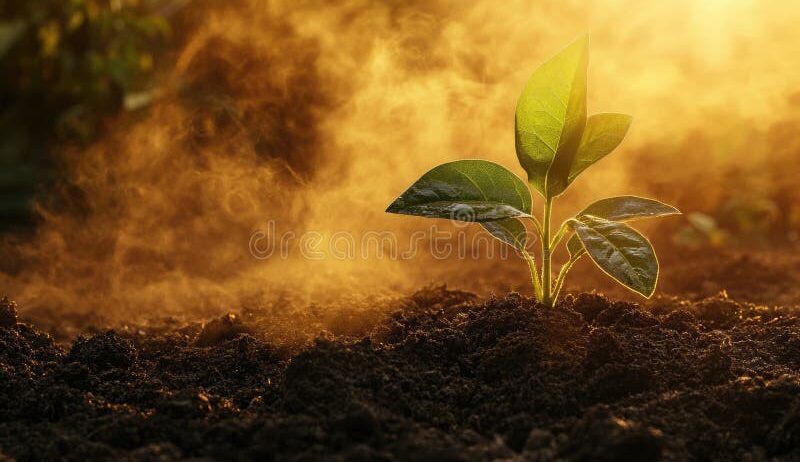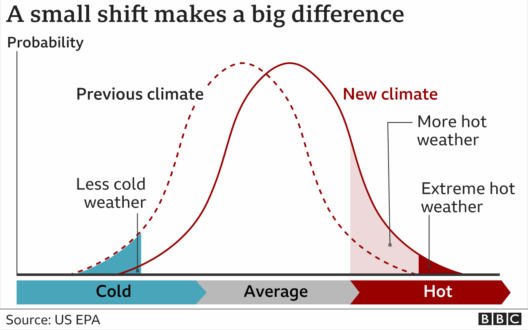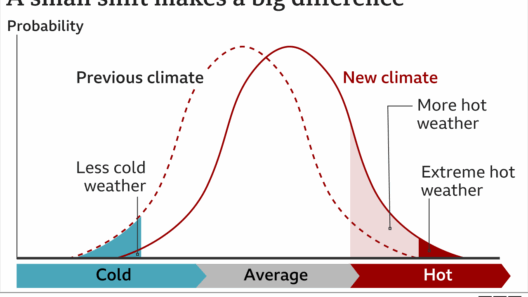In recent years, the term “weather whiplash” has gained traction as an apt descriptor for the increasingly erratic and extreme weather phenomena we witness. It serves as a metaphor for the abrupt shifts in climate patterns that seem to strike with little warning, akin to a sudden and jarring jolt from an unexpected force. In the age of global warming, these weather incidents—ranging from torrential downpours to prolonged droughts—are becoming more prevalent. It is essential to delve into the intricacies of this phenomenon to understand how global warming is not merely a distant concern but a burgeoning reality that directly impacts ecosystems, agriculture, and human life.
The cosmos has always displayed a delicate balance, governed by intricate systems that once worked harmoniously to foster stable weather patterns. However, as we ascend further into the throes of climate change, that balance is being irreparably altered. Rising global temperatures—an emblem of anthropogenic activities primarily driven by fossil fuel consumption, deforestation, and industrialization—serve as the catalyst for de-stabilizing these climatic systems. The direct consequences are vividly illustrated in the form of severe weather events that switch on a dime, wreaking havoc on communities and natural habitats.
At the heart of weather whiplash lies a complicated interplay between atmospheric dynamics and terrestrial realities. Warm air, capable of retaining moisture, becomes a double-edged sword. While initially, this humidity can lead to heartening rainfalls that invigorate parched lands, it rapidly morphs into a perilous harbinger of floods. Studies indicate that as the atmosphere warms, it can hold approximately seven percent more moisture for each degree Celsius of increase. This amplifies the potential for intense precipitation events, making deluges more commonplace in various regions worldwide. The juxtaposition of excessive rainfall coupled with dry spells can create a perilous cycle of drought and flooding, bequeathing landscapes that oscillate from verdant to barren.
This erratic behavior of weather not only inflicts chaos upon the natural world but also poses profound challenges to agriculture. Farmers, steeped in generations of knowledge dictating the rhythms of planting and harvest, find themselves floundering in uncertainty. Weather whiplash introduces a visceral dissonance in expected climatic conditions; the customary patterns are disrupted, thwarting crops that thrive under stable conditions. This oscillation can lead to crop failures, as plants may be ill-prepared for sudden shifts, collapsing under the weight of unexpected downpours or languishing in prolonged droughts. In an age where food security remains critical, weather-related agricultural disruptions reverberate with global implications, potentially heightening food scarcity in an already fragile system.
Human settlements are equally susceptible to the whims of this climatic upheaval. Urban areas, characterized by their concrete jungles and sprawling infrastructures, are particularly vulnerable to the spikes in weather extremes. Flooding can overwhelm drainage systems that were designed based on historical weather data, leading to catastrophic scenarios. Streets morph into rivers, jeopardizing lives and livelihoods. Conversely, when drought conditions take hold, reservoirs dwindle, exacerbating water scarcity and increasing competition for this precious resource. In essence, weather whiplash acts as a clarion call for re-evaluation of urban planning and disaster preparedness; municipalities must enhance their resilience to weather extremes that are no longer mere anomalies but harbingers of a new normal.
The ripple effects of weather whiplash extend beyond immediate weather phenomena. These sudden and severe shifts strain ecosystems, triggering a cascade of ecological ramifications. Biodiversity, often an intricately woven tapestry of interdependent species, is particularly at risk. Species pushed to their limits by climate change may find their habitats rendered inhospitable or—like a delicate ballet turned chaotic—displaced. The delicate cues that govern migration patterns or breeding cycles become unmoored from their environmental anchors, leading to mismatches in timing and availability of resources. In the grand scheme of ecological dynamics, such dissonance can lead to extinction cascades, altering whole biomes irreversibly.
Yet, amidst this disarray, there arises a critical juncture—opportunity. The recognition of weather whiplash as a tangible manifestation of climate change ushers in a clarion call for innovative adaptation and resilience strategies. Emphasizing green infrastructure, communities can bolster their capacity to mitigate flooding and manage stormwater efficiently. Sustainable agricultural practices, too, can be transformed to employ climate-resilient crops and diversified planting schedules, allowing farmers to navigate the vicissitudes of weather more effectively. Ultimately, the sharing of knowledge derived from indigenous practices, scientific research, and collective community efforts could lay down the groundwork for a more adaptable society.
Through education and advocacy, individuals can amplify their voices in the mounting discourse surrounding climate change. The narrative of weather whiplash underscores the necessity to advocate for policies that prioritize environmental stewardship, transitioning to renewable energy sources, and reducing carbon footprints. Every action, no matter how minuscule, contributes to a collective momentum in combating these challenges. It is imperative to foster a culture of awareness, where discussions about climate change shift from the peripheries to the forefront of societal priorities.
In conclusion, understanding weather whiplash and its implications in the context of global warming serves as a poignant reminder of our interconnectedness with the environment. The sudden shifts in weather patterns compel a profound reconsideration of how we inhabit this planet. As the climate crisis intensifies, recognizing the instability it brings is more critical than ever. It necessitates not just awareness but actionable strategies to adapt, mitigate, and ultimately forge a path toward sustainability. The pursuit of a balanced existence with our planet is no longer a distant ideal but an urgent imperative—one that shapes not only our present but the legacy we leave for future generations.






